[caption id=“attachment_2166407” align=“alignnone” width=“940”]
 Millions of people in the UK and northern Europe have glimpsed the best solar eclipse in years. ESA[/caption] [caption id=“attachment_2166265” align=“aligncenter” width=“940”]
Millions of people in the UK and northern Europe have glimpsed the best solar eclipse in years. ESA[/caption] [caption id=“attachment_2166265” align=“aligncenter” width=“940”]
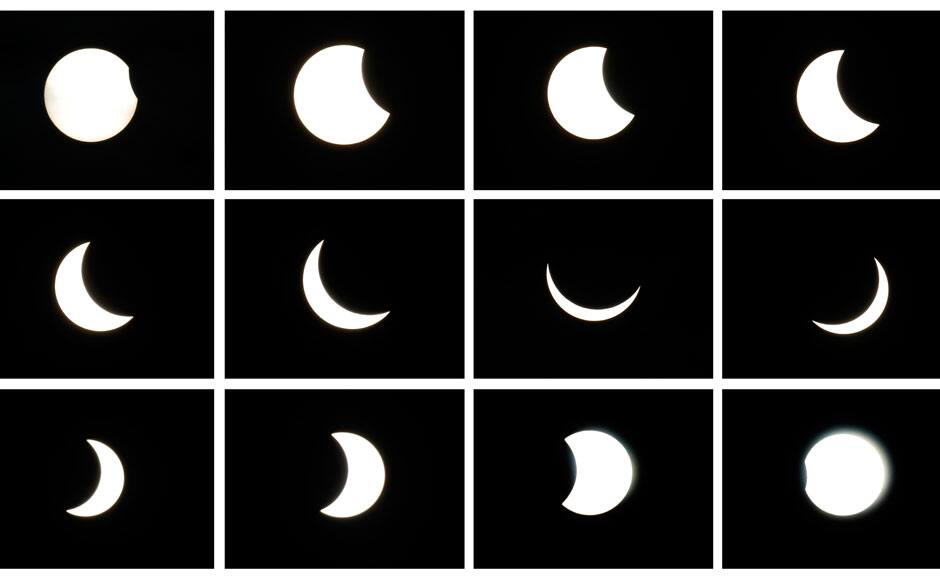 A combination of photographs shows a partial solar eclipse. Reuters[/caption] [caption id=“attachment_2166269” align=“aligncenter” width=“940”]
A combination of photographs shows a partial solar eclipse. Reuters[/caption] [caption id=“attachment_2166269” align=“aligncenter” width=“940”]
 A great swathe of the Earth’s surface was plunged into darkness as the Moon came between us and the Sun. Reuters[/caption] [caption id=“attachment_2166271” align=“aligncenter” width=“940”]
A great swathe of the Earth’s surface was plunged into darkness as the Moon came between us and the Sun. Reuters[/caption] [caption id=“attachment_2166271” align=“aligncenter” width=“940”]
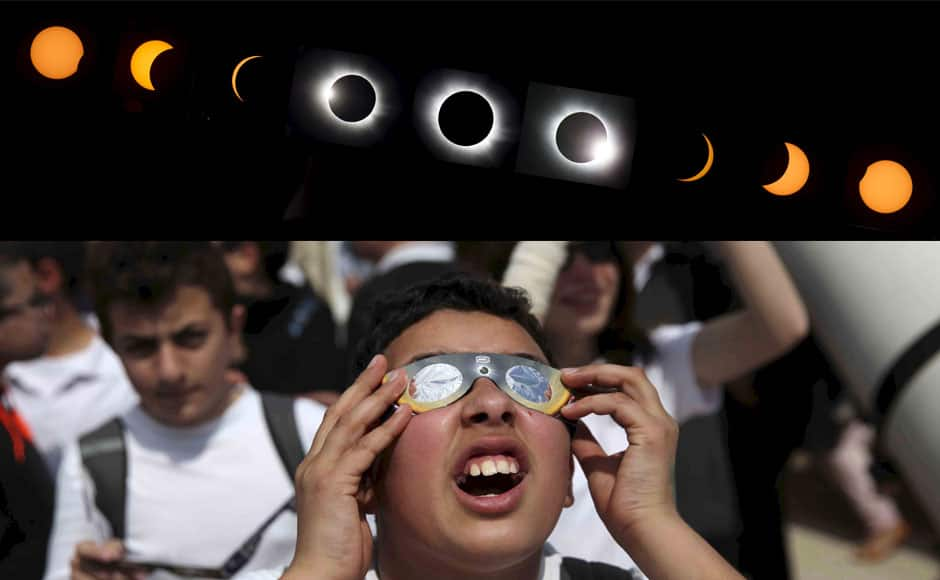 People keen to catch a glimpse of the rare phenomenon were advised not to look directly at it. Looking directly at the Sun can cause serious harm, and skywatchers were directed to the multiple ways to catch an eclipse safely and in comfort. Reuters[/caption] [caption id=“attachment_2166275” align=“aligncenter” width=“940”]
People keen to catch a glimpse of the rare phenomenon were advised not to look directly at it. Looking directly at the Sun can cause serious harm, and skywatchers were directed to the multiple ways to catch an eclipse safely and in comfort. Reuters[/caption] [caption id=“attachment_2166275” align=“aligncenter” width=“940”]
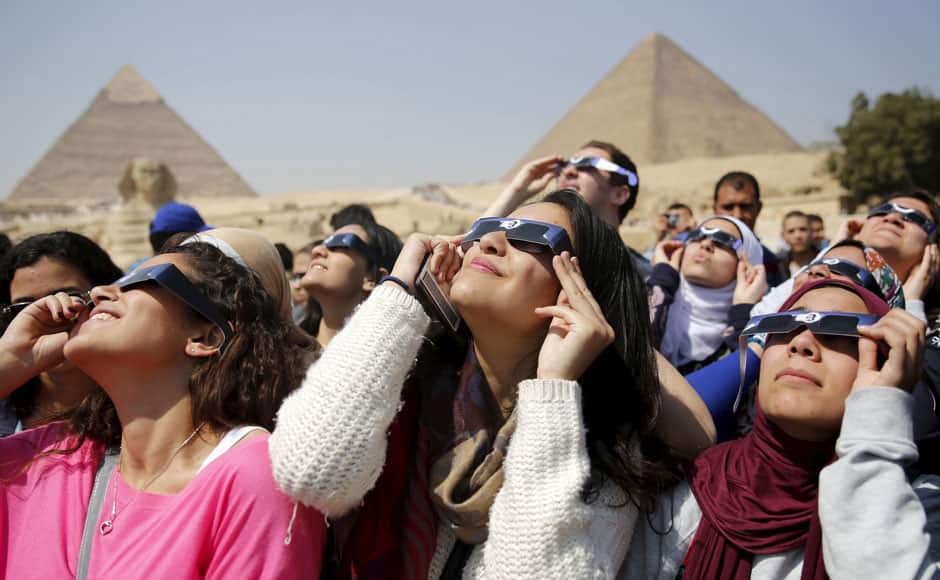 People look up to view a partial solar eclipse around the Giza Pyramids, on the outskirts of Cairo, March 20, 2015. A partial eclipse was visible on Friday, the first day of northern spring, across parts of Africa, Europe and Asia. The total eclipse of the sun was only visable in the Faroe Islands and the Norwegian archipelago of Svalbard in the Arctic Ocean. REUTERS[/caption] [caption id=“attachment_2166279” align=“aligncenter” width=“940”]
People look up to view a partial solar eclipse around the Giza Pyramids, on the outskirts of Cairo, March 20, 2015. A partial eclipse was visible on Friday, the first day of northern spring, across parts of Africa, Europe and Asia. The total eclipse of the sun was only visable in the Faroe Islands and the Norwegian archipelago of Svalbard in the Arctic Ocean. REUTERS[/caption] [caption id=“attachment_2166279” align=“aligncenter” width=“940”]
 People use a special solar visor as they look at a partial solar eclipse in a square of Pontevedra in the northwest Spain March 20, 2015. A solar eclipse swept across the Atlantic Ocean on Friday with the moon set to block out the sun for a few thousand sky gazers on remote islands with millions more in Europe, Africa and Asia getting a partial celestial show. REUTERS[/caption] [caption id=“attachment_2166281” align=“aligncenter” width=“940”]
People use a special solar visor as they look at a partial solar eclipse in a square of Pontevedra in the northwest Spain March 20, 2015. A solar eclipse swept across the Atlantic Ocean on Friday with the moon set to block out the sun for a few thousand sky gazers on remote islands with millions more in Europe, Africa and Asia getting a partial celestial show. REUTERS[/caption] [caption id=“attachment_2166281” align=“aligncenter” width=“940”]
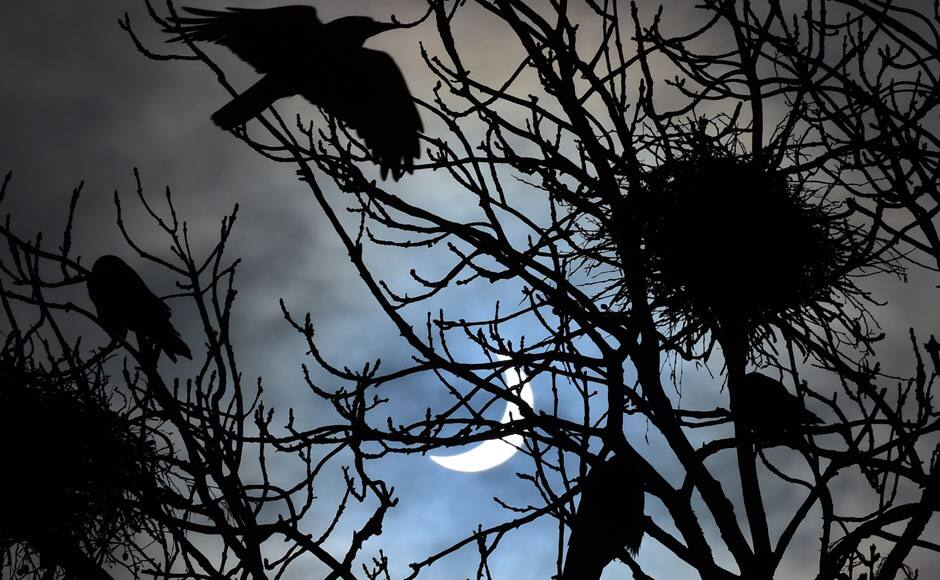 Few land areas were directly in the path of the Moon’s deepest shadow - its so-called umbra - and seabirds probably had some of the most dramatic eclipse experiences. Reuters[/caption] [caption id=“attachment_2166283” align=“aligncenter” width=“940”]
Few land areas were directly in the path of the Moon’s deepest shadow - its so-called umbra - and seabirds probably had some of the most dramatic eclipse experiences. Reuters[/caption] [caption id=“attachment_2166283” align=“aligncenter” width=“940”]
 A student observes the shadow of a partial eclipse cast on to white paper, at the Astronomical Observatory in Bialystok. Reuters[/caption] [caption id=“attachment_2166401” align=“aligncenter” width=“940”]
A student observes the shadow of a partial eclipse cast on to white paper, at the Astronomical Observatory in Bialystok. Reuters[/caption] [caption id=“attachment_2166401” align=“aligncenter” width=“940”]
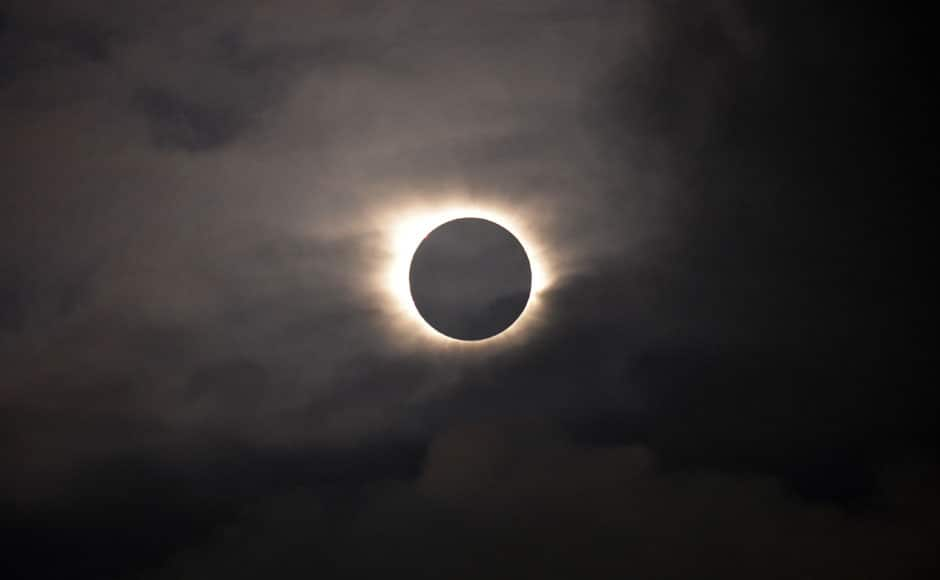 A total solar eclipse is visible through the clouds as seen from Vagar on the Faeroe Islands. Apart from a few small breaks, a blanket of clouds in the Faeroe Islands blocked thousands of people there from experiencing the full effect of the total eclipse. AP[/caption] [caption id=“attachment_2166403” align=“aligncenter” width=“940”]
A total solar eclipse is visible through the clouds as seen from Vagar on the Faeroe Islands. Apart from a few small breaks, a blanket of clouds in the Faeroe Islands blocked thousands of people there from experiencing the full effect of the total eclipse. AP[/caption] [caption id=“attachment_2166403” align=“aligncenter” width=“940”]
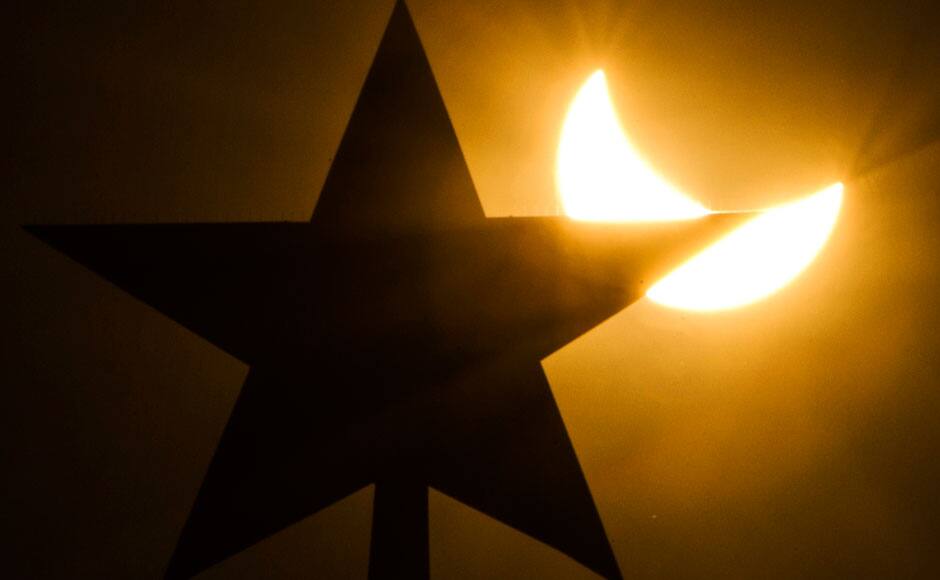 This photo taken through a solar filter material, the moon blocks part of the sun during a solar eclipse as seen over Moscow Kremlin’s Troitskaya (Trinity) tower, in Russia, a rare solar event that won’t be repeated for more than a decade. AP[/caption] [caption id=“attachment_2166405” align=“aligncenter” width=“940”]
This photo taken through a solar filter material, the moon blocks part of the sun during a solar eclipse as seen over Moscow Kremlin’s Troitskaya (Trinity) tower, in Russia, a rare solar event that won’t be repeated for more than a decade. AP[/caption] [caption id=“attachment_2166405” align=“aligncenter” width=“940”]
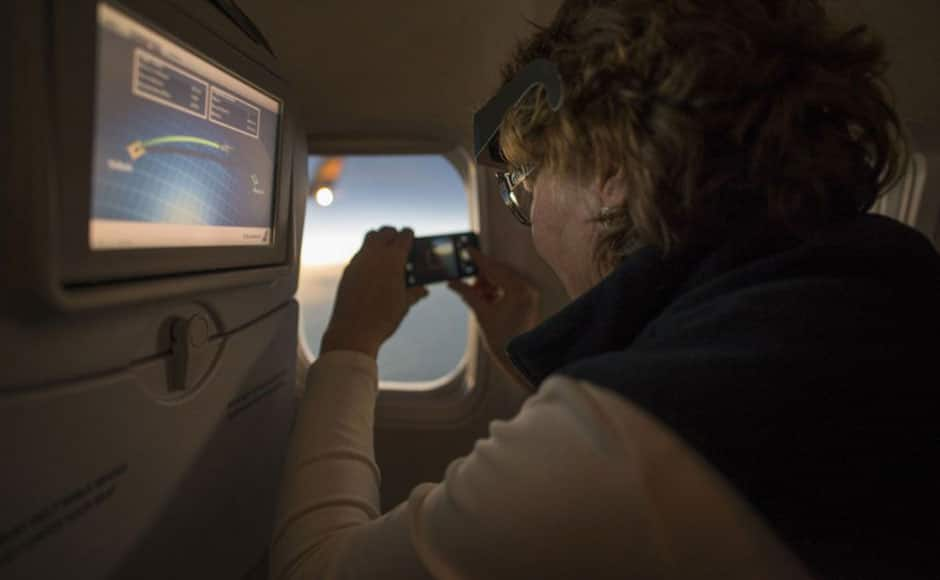 A woman takes a photo of a partial solar eclipse above the Faroe Islands from a Boeing 737 chartered by a science magazine. A group of 50 die-hard Danish eclipse watchers paid 15,800 kroner each (2,121 euros, $2,261) to watch the event miles above the Faroe Islands from a Boeing 737 chartered by a science magazine. AFP[/caption]
A woman takes a photo of a partial solar eclipse above the Faroe Islands from a Boeing 737 chartered by a science magazine. A group of 50 die-hard Danish eclipse watchers paid 15,800 kroner each (2,121 euros, $2,261) to watch the event miles above the Faroe Islands from a Boeing 737 chartered by a science magazine. AFP[/caption]
Photos: Thousands catch glimpse of 'breathtaking' solar eclipse
FP Staff
• March 21, 2015, 14:52:45 IST
Millions of people in the UK and northern Europe have glimpsed the best solar eclipse in years.
Advertisement
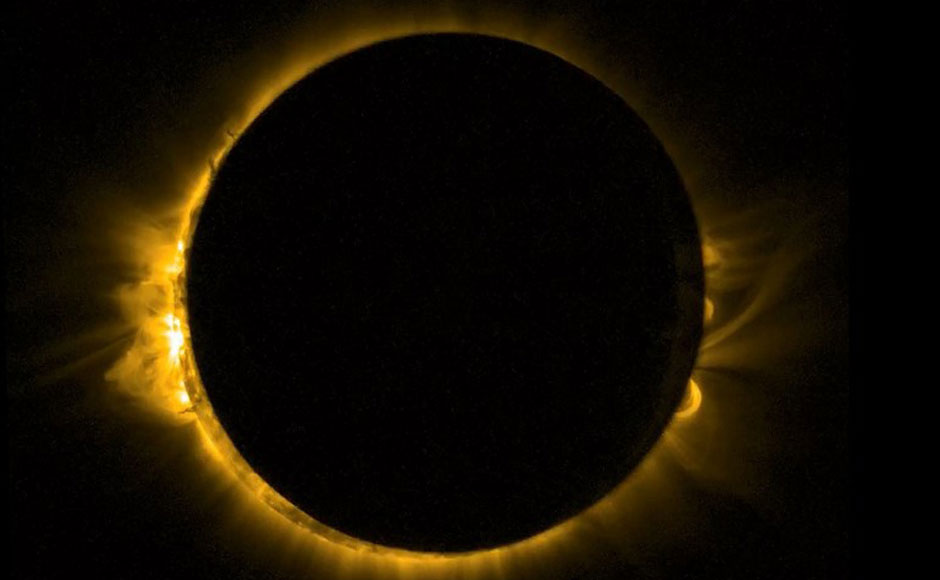)
End of Article